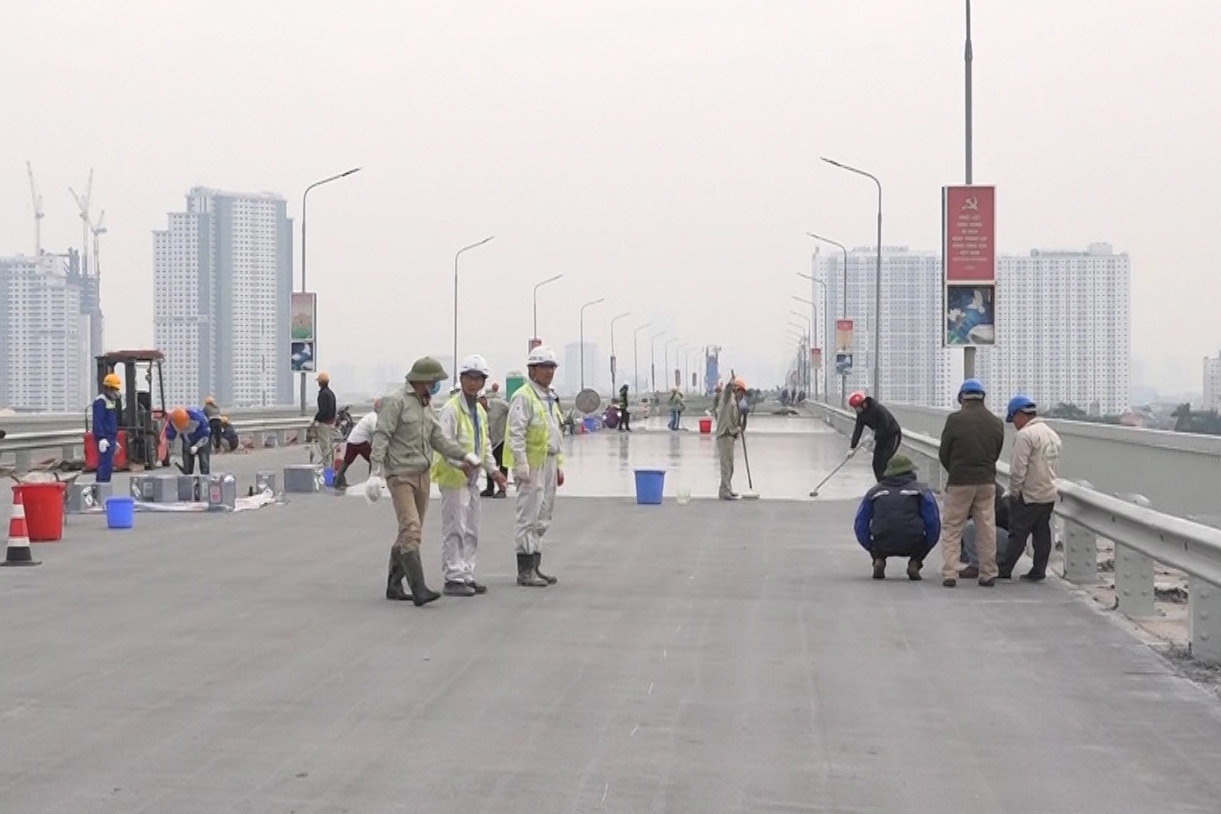 |
|
Repairing Thang Long Bridge in Hanoi.
|
27,000 square metres of the bridge surface will be repaired and covered in a new layer of ultra-high performance concrete and then another layer of polymer concrete.
Nguyen Trung Sy from the Road Directorate of Vietnam said the polymer concrete layer is 4-8cm thick.
Taiyu Company based in Japan will use epoxy coats to paint on the surface to help it endure the stress and strain.
Kato Akihiro, director of Taiyu Vietnam Company said this is the first time the epoxy has been used in Vietnam. It will not only provide a water resistance coat but also help the bridge be less slippery.
According to Sy, the directorate has used all resources and sent out all employees to work on this project. The polymer concrete layer can last for 5-10 years and be maintained for further usage.
The project is 15 days ahead of the schedule. If the weather allows, the project will be completed on December 30 or 31. The project has a total investment of VND270bn (USD11,739)
Hanoi’s Thang Long Bridge was put into use in 1985. Since 2009, the bridge began showing signs of deterioration and has been repaired continually. Cracks and potholes on the surface of the bridge were constantly fixed and reappeared. Tran Hung Ha from the Directorate for Road of Vietnam said they had to repair the bridge more frequently since early 2019 due to constant rains and severe heat waves.
More than 10,500 square metres, or 40% of the total bridge surface, have been repaired. Starting from 2012, the Ministry of Transport agreed to repair the bridge annually instead of setting up huge projects. The annual cost to repair 3.3km was VND1.5bn (USD64,600). Dtinews/VietNamNet

Inner-city bridges create new Hanoi urban facelift
Bridges have improved Hanoi’s connectivity with other provinces, boosting the growth of Hanoi and the northern region.